Inevitable to remain at least for a few minutes with one’s head upward to admire, once one has walked down the central nave of Piacenza Cathedral, the great octagonal dome wonderfully frescoed by Guercino (Giovanni Francesco Barbieri, Cento, 1591 - Bologna, 1666) and Morazzone (Pier Francesco Mazzucchelli, Morazzone, 1573 - Piacenza, 1626). Cartouche-bearing figures of prophets , seated in the clouds in the company of cherubs, look down from on high communicating the divine word to men: David, Isaiah, Haggai, Hosea, Zechariah, Ezekiel, Micah and Jeremiah are recognized, each enclosed in his own sail. Initially the Prophets were commissioned in 1625 from Morazzone, but the Lombard artist did not make it in time to complete his commission, as death intervened as soon as the first two sails, namely those of David and Isaiah, were completed. The following year, therefore, Guercino was called upon to continue and finish the project, who created the remaining six sails. In addition to the latter, he also frescoed the lunettes, in which four episodes from the childhood of Jesus (the ’ Announcement to theShepherds, the Adoration of the Shepherds, the Presentation in the Temple and the Flight into Egypt) alternate with pairs of Sibyls, eight in all. The four lunettes with the Sibyls are in ideal dialogue with the Prophets for the similar task of predicting the future, but in a pagan key.
Visitors who do not suffer from vertigo (they reach a height of 27 meters by climbing more than 130 steps) are given the opportunity since 2018, thanks to the project The Mysteries of the Cathedral, which also led to the new layout of Kronos - Museum of the Cathedral, to climb up to the dome to see the frescoes up close: a route that starts from the third level of the museum makes it possible to ascend through medieval paths in the thickness of masonry, spiral staircases, and attics, with frequent very suggestive overlooks of the city and the interior of the cathedral; reaching the attic of the nave provides access to the loggia of the drum of the dome, from which visitors can enjoy the beauty of the pictorial cycle of Guercino and Morazzone from a close position. Pathways in the thickness of masonry, thanks to the mur épais technique, were used in ancient times to reach the women’s galleries in order to attend religious celebrations, to climb to the highest parts of the building during maintenance, to hide from danger, or to draw up notarial acts. And it is even more recent (as of January 2020) a further glimpse toward the frescoes of the presbytery completed between 1605 and 1609 by Camillo Procaccini (Parma, 1561 - Milan, 1629) and Ludovico Carracci (Bologna, 1555 - 1619), with the help of the younger collaborators younger Lorenzo Garbieri (Bologna, 1580 - 1654) and Giacomo Cavedoni (Sassuolo, 1577 - Bologna, 1660), thanks to false women’s gallery placed above the high altar and never accessible until 2019. In fact, on the occasion of the 400th anniversary of Ludovico Carracci’s death, celebrated precisely in 2019, a new stage was added along the ascent to the dome to have the opportunity to also admire the frescoes of the presbytery and apse. The complete pictorial cycle included the Birth of the Virgin and theAnnunciation by Carracci, the Visitation, the Descent of the Holy Spirit (detached and now housed in the bishop’s palace) and the Transit of Mary (now on the counter-façade) flanked by Sybils and Prophets by Procaccini; as well as Carracci’s Funerals of the Virgin and The Apostles at the Empty Sepulchre (now in the National Gallery in Parma), David and Isaiah also by Carracci (on the counterfaçade), Procaccini’sAssumption and Coronation of the Virgin, the Glories of Angels, Predecessors in Limbo and Triumphant Angels.
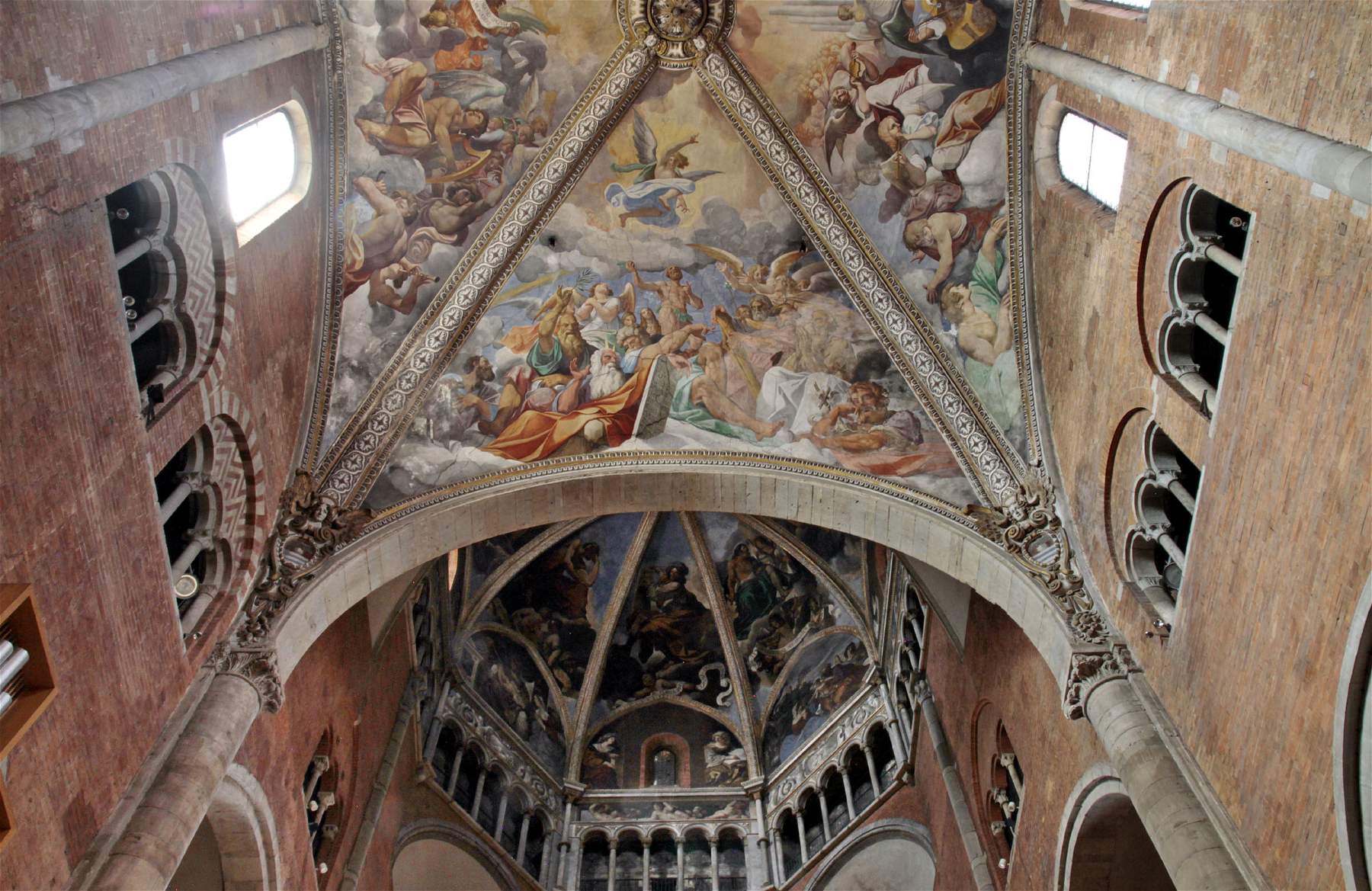 |
| Piacenza Cathedral, the presbytery frescoed by Ludovico Carracci and, in the background, the dome with frescoes by Guercino |
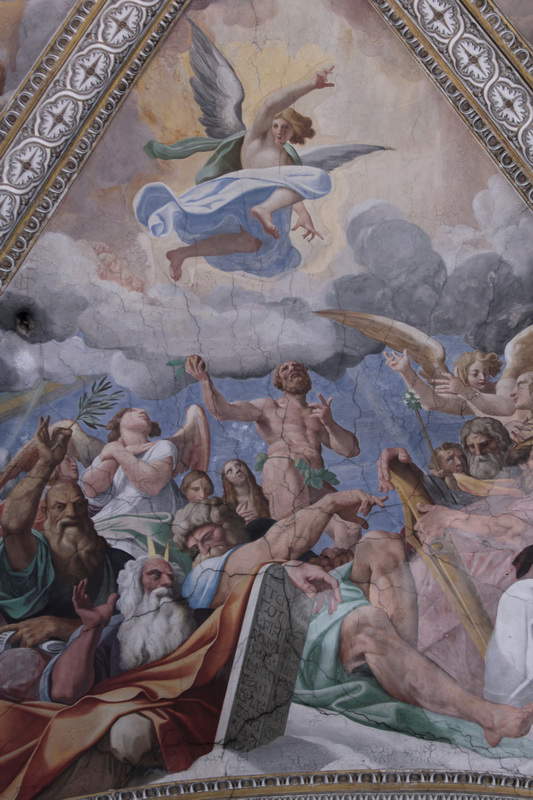 |
| Detail of the frescoes in the presbytery |
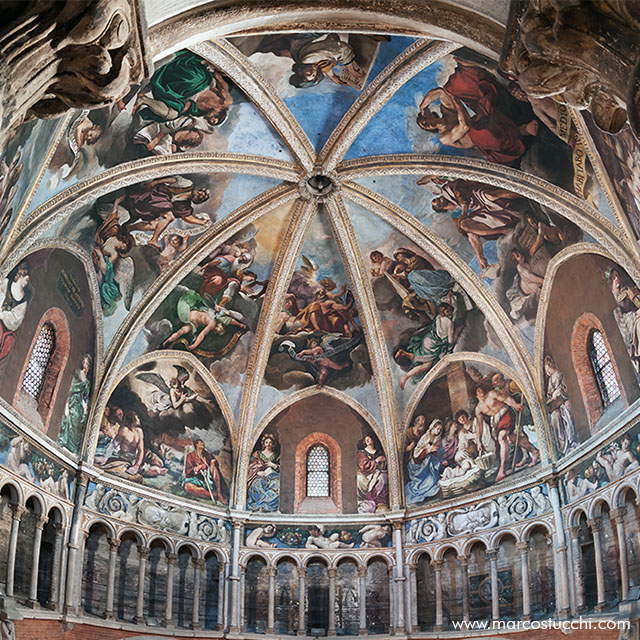 |
| Guercino’s frescoes on the dome, ©Marco Stucchi |
But if it is the “upper part” of the Cathedral that is enchanting, the sculptural and pictorial works more within sight are no less so. A large gilded polyptych, consisting of three rows of niches with sculptures inside and bordered by high spire pillars, dominates the high altar: the work was created by Antonio Burlengo and Bartolomeo da Groppallo between 1443 and 1447, and it was the latter who painted and gilded the rich apparatus, giving it an appearance of solemnity and magnificence. Larger in size and placed in the central portion are the three sculptural figures of the Assumption, the Redeemer, and God the Father, while smaller in size are saints, particularly associated with Piacenza, such as St. Antoninus and St. Justina, patrons of the city. Relics of the latter are preserved in the medieval crypt.
On the columns of the cathedral are of considerable importance the tiles of the Paratici, evidence of the contribution of the local Guilds of Arts and Crafts (also called, precisely, “Paratici”) in the construction of the church: there are the Carradori, the Calzolai, the Mercanti di stoffa, the Conciatori di pelle, the Fornai, the Ciabattini, and the Tintori, each guild represented by a clearly descriptive depiction. Two panels, on the other hand, are dedicated to a seated man and woman and the Hierosolimitan Pilgrim.
The pictorial apparatus decorating the Latin-cross cathedral includes paintings between the Middle Ages and the Renaissance: the earliest are located in the left transept, including St. Christopher between the equestrian figures of Saints George and Antoninus datable to the second half of the 13th century and the Madonna and Child Enthroned between Saints John the Evangelist and John the Baptist on a pillar of the nave. Next, from the late fourteenth century, is the lunette with the Madonna and Child Enthroned and Saints referable to courtly Lombardy (the kneeling patron is probably Bishop Maineri, protomedico at the court of the Visconti). Finally, of particular note is theEcce homo on the pillar between the right transept and chancel, whose iconography constitutes a unicum in this area, as blood generates Eucharistic particles.
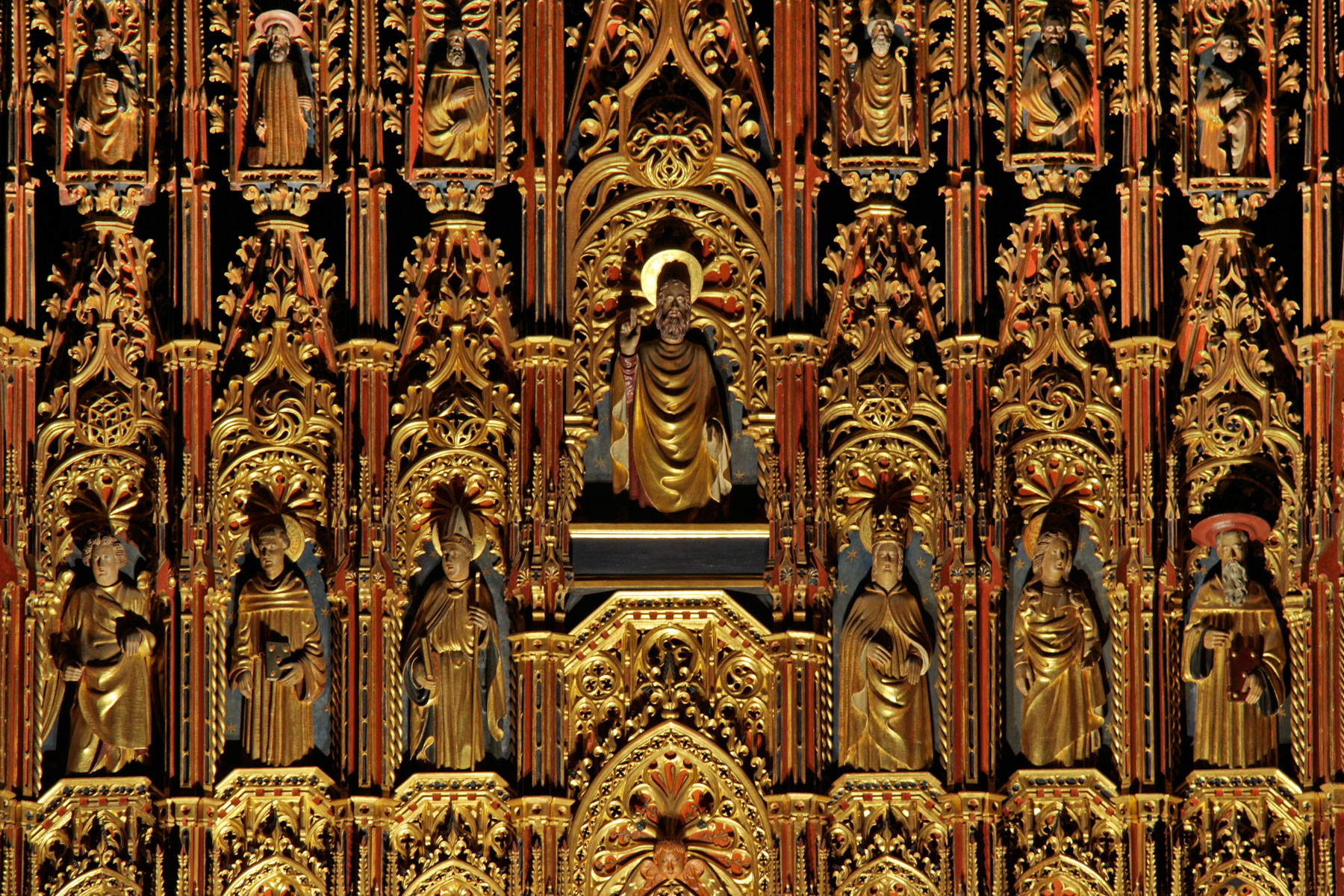 |
| The gilded polyptych of the high altar, detail |
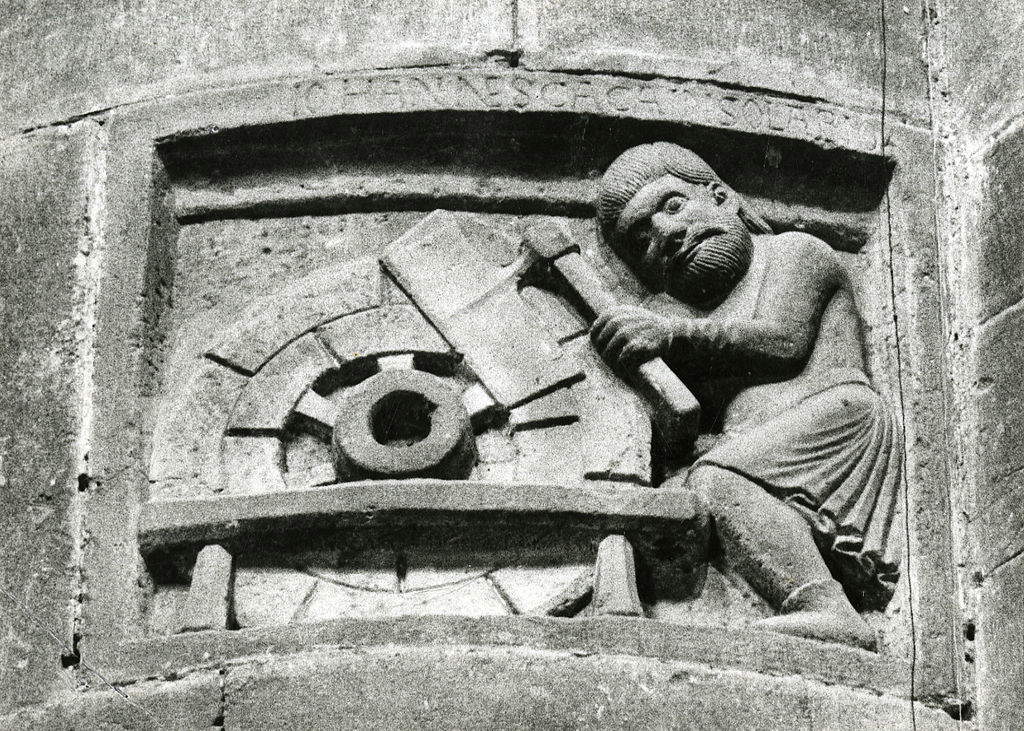 |
| One of the panels of the paraments |
The cathedral is considered one of the most significant monuments of the Romanesque period in the Po Valley, and its construction appears to be ascribable to 1122, as stated in a Latin phrase on a plaque walled into the facade. The latter is monocusped and vertically tripartite by two half-columns and has three portals decorated by protiri on two levels; it is clad with pink Verona marble up to the protiri, while above it is sandstone. A large rose window with twenty-four rays embellishes even more the façade, which is already rich in extensive medieval sculptural decoration, especially on the three portals. The central portal with Renaissance stylobal lions has symbols of the Zodiac on the archivolt: among the oldest in the West, it shows a cosmography with signs on the left and right, and winds, stars, sun, moon, and hand of God in the center. The left portal shows gospel scenes from the life of Christ on the lintel referable to Wiligelmus (active between the 11th and 12th centuries), and on the sides two pairs of figures represent fearful humanity living in sin. Figures referring to sin also appear on the right portal, with the lintel referable to Nicholas (active in northern Italy from about 114) continuing the depiction of Christ’s earthly affair. On the capitals are depicted theKilling of Abel and Adam and Eve after their expulsion from Paradise, and on the top of the jambs are visible allegories of Patience, Humility and Avarice.
The current appearance of Piacenza Cathedral is the result of many restorations (the last one in the late 19th century directed by Camillo Guidotti). Due to the presence, as previously mentioned, of the mur épais technique, derivation from Norman and Anglo-Norman architecture has been assumed. According to what Quintavalle proposed in 2006, the design would be by Niccolò who would have taken the scheme of the Parma Cathedral, where he had worked, and there would have been three phases of construction: a first between the late 11th and early 12th century, a second between 1120 and 1130 with the renovation after the 1117 earthquake and the consequent completion of the sculptures, and a third at the beginning of the 13th century with the insertion of Gothic elements.
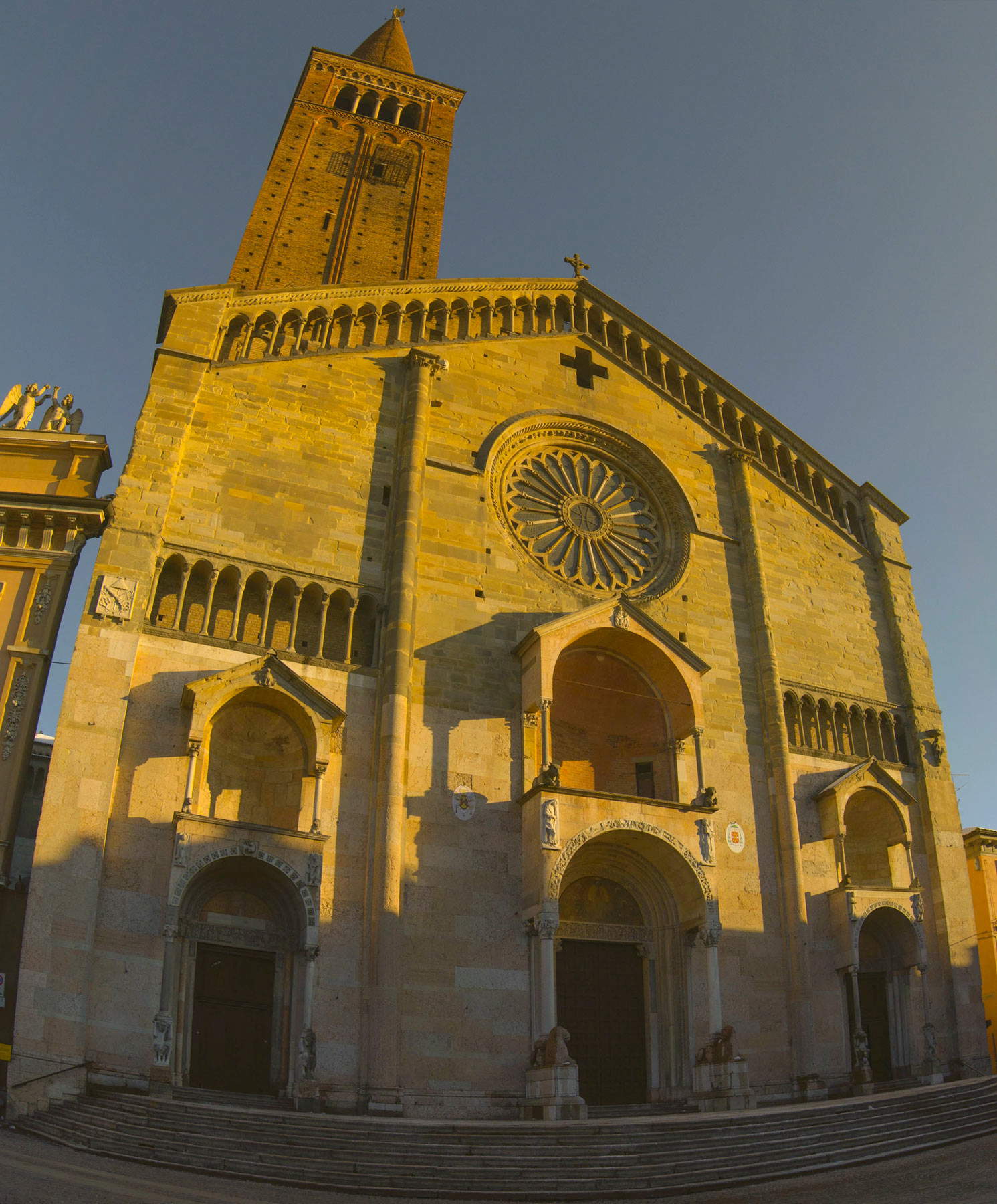 |
| The facade of the Cathedral of Piacenza. Ph. Credit Matteo Bettini |
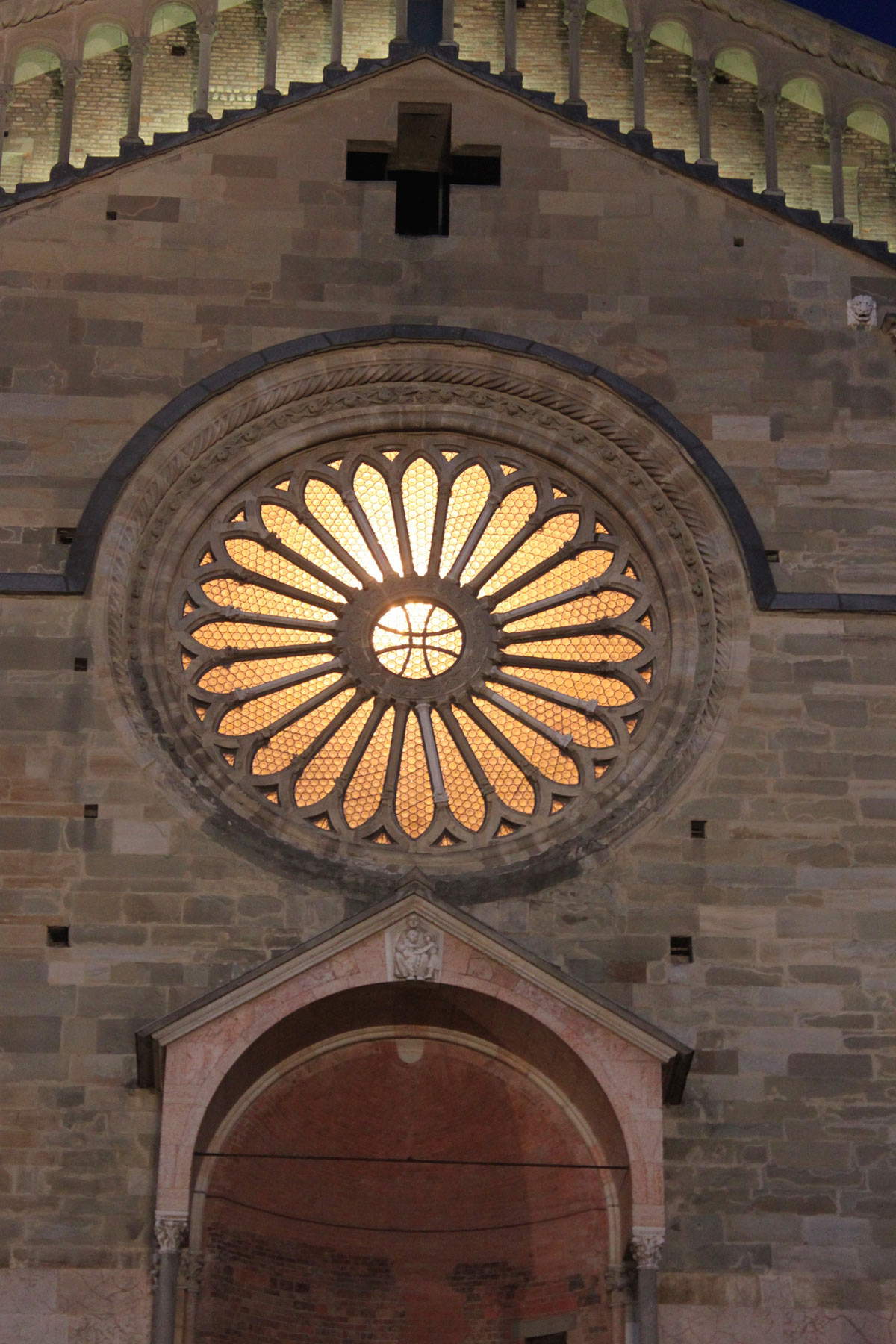 |
| The rose window. Ph. Credit Photography Dassoni |
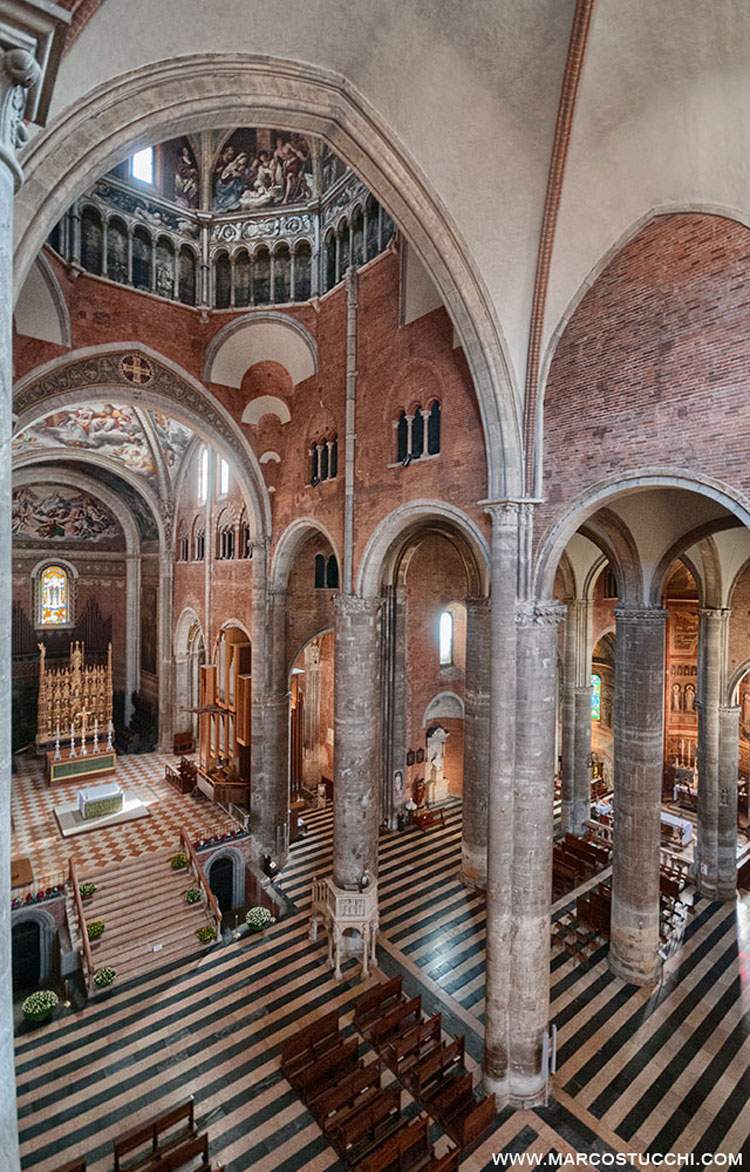 |
| Transept and presbytery, ©Marco Stucchi |
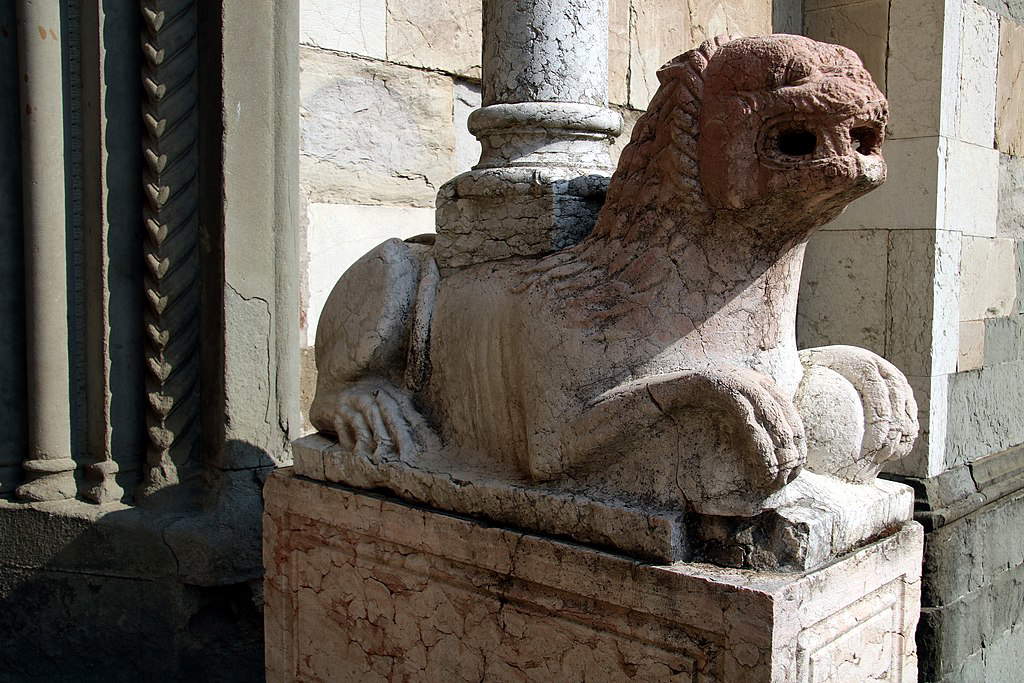 |
| One of the stylophoric lions on the facade. Ph. Credit |
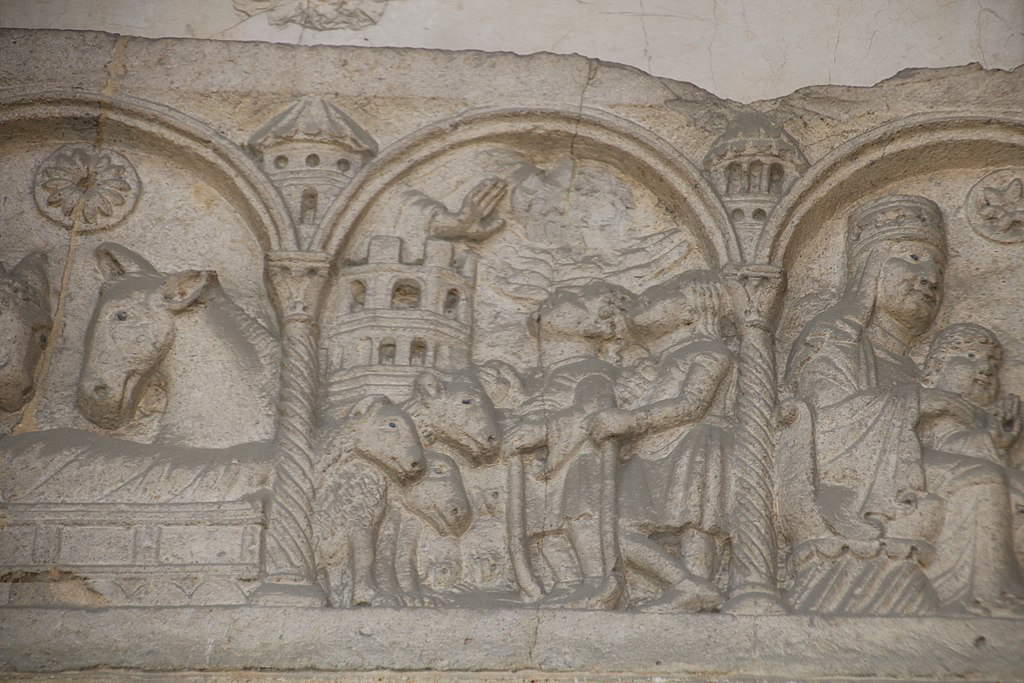 |
| A detail of the architrave. Ph. Credit |
On the left side of the facade stands tall the brick bell tower, whose spire is surmounted by the so-called Angil dal Dom: the statue of the celestial creature that has become dear to the people of Piacenza, entirely gilded and composed of thirty-four embossed copper foils, 2.75 meters high and referable for its conception to Pietro Vago. TheAngil dal Dom has dominated the city since 1341 and serves as a weather vane: in fact, it is the oldest meteorological instrument used by the city’s inhabitants.
Since 2015, the current Kronos Museum has also been opened to the public with the intention of telling the story of the cathedral: divided into three levels, it exhibits sculptural and pictorial works, the Treasure of the Cathedral consisting of sacred objects made of precious materials, textiles and sacred vestments of fine workmanship, an immense heritage of relics and reliquaries of various forms, and the reproduction of a scriptorium showing all the tools once used by the monks for the production of illuminated manuscripts. Finally, the Master’s Book or Codex 65 is preserved here: this is the most important volume of the Cathedral and the city, the drafting of which was begun in the 12th century; it contains notions of astronomy and astrology, indications on lunar cycles, advice and remedies against diseases, as well as splendid miniatures and musical sequences, the first medieval liturgical theatrical dramas that had the function of telling the stories of the Bible.
The Cathedral constitutes a treasure chest of art and faith in the heart of Piacenza, where one can admire true pictorial and sculptural treasures with unique experiences such as climbing the dome.
Warning: the translation into English of the original Italian article was created using automatic tools. We undertake to review all articles, but we do not guarantee the total absence of inaccuracies in the translation due to the program. You can find the original by clicking on the ITA button. If you find any mistake,please contact us.